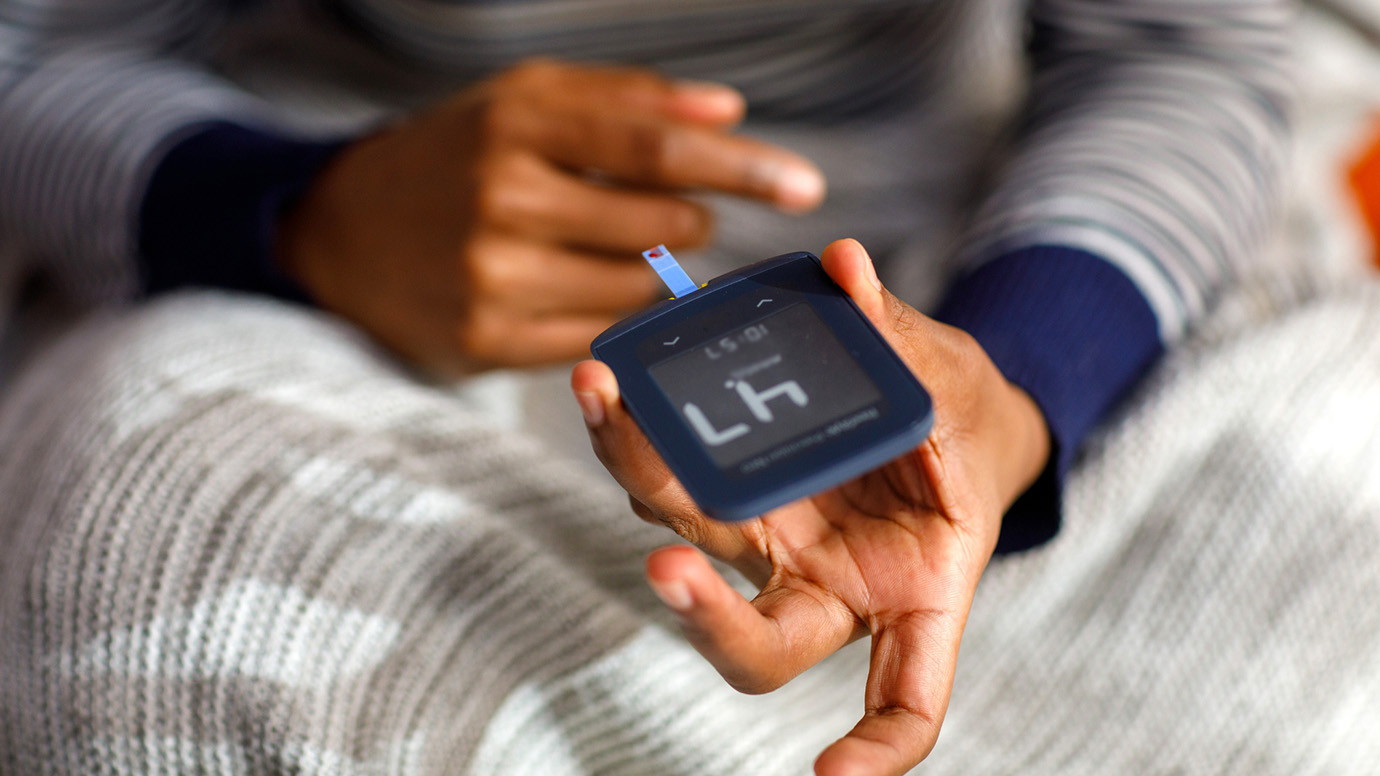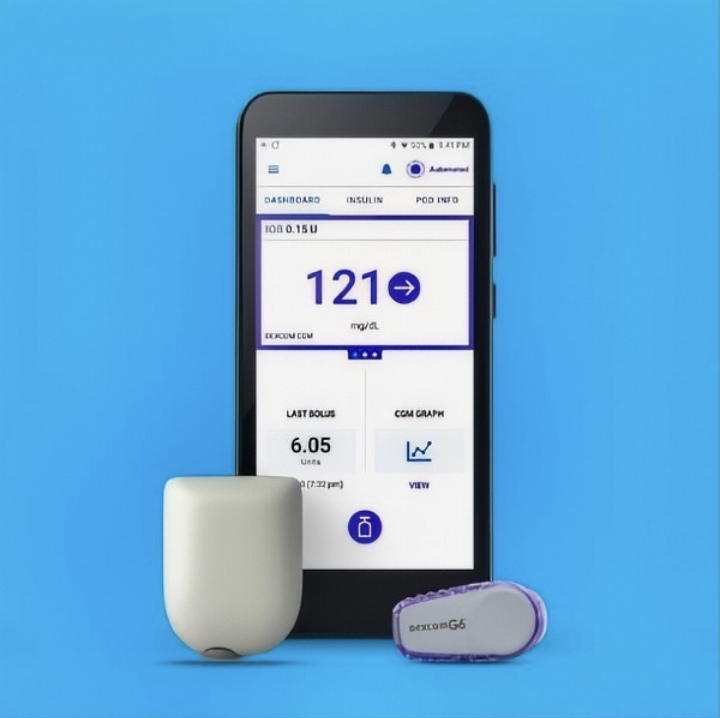A Low Blood Sugar Preparedness Plan for College Students with Type 2 Diabetes
Written by: Julia Flaherty
6 minute read
February 17, 2022
If you’re headed off to college with type 2 diabetes and take blood-sugar-lowering medication like insulin, bookmark this guide!
If you’re heading off to college with type 2 diabetes and are treating it with insulin or another blood-sugar-lowering medication, here are our tips for creating a low blood sugar preparedness plan away from home. Every age group impacted by type 2 diabetes should feel confident in their knowledge of low blood sugar warning signs and have a solid treatment plan.
Pack low blood sugar snacks
As you pack up your belongings to head off to college, be sure that one of those boxes includes a variety of low blood sugar snacks. Ideally, you want fast-acting sugars available when you experience low blood glucose levels. Opt for snacks like candy, fresh or dried fruit, fruit juice, or even honey. Glucose tablets are also a good option.
Nutritionists advise treating low blood sugar symptoms as they emerge, even if your blood sugar levels are slightly above 3.885 mmol/l70 mg/dL. The better you get at picking up on your low blood sugar symptoms, the better you can prevent them from dropping. Just remember that if your blood sugar has been running on the higher end consistently (like over 11.1 mmol/l200mg/dL), you may feel like you’re experiencing low blood sugar even if you’re not. Keeping blood sugar levels in a healthy range will also help you better feel when your levels are outside of that healthy range.
When treating a low, the rule that most healthcare professionals recommend is for patients to ingest 15g of carbohydrate and then wait 15 minutes to determine whether they need more sugar. This is ideal for low blood sugar levels brought on by slightly more activity than normal or for a slight miscalculation in the amount of insulin or other medication your body needs for a meal. If you’ve accidentally given yourself a large amount of insulin or if you were just far more physically active than normal, you may need to treat a low blood sugar more aggressively.
Consider investing in a CGM to improve blood sugar level awareness
A continuous glucose monitor (CGM) is a small wearable device that tracks your blood sugar levels 24/7 (except for a brief “warm-up” period after changing a sensor, which happens every week or two, depending on the CGM you use). CGMs can help you identify if your blood sugar is stable, rising, or falling. CGMs are also a great idea to have as you head off to college and may feel like you have less time to give to your blood sugar management.
Wearing a CGM may cut back on the need to test your blood sugar with a blood glucose meter. Each type of CGM technology works differently. Unfortunately, you may have to decide which CGM you try based on your insurance coverage. Your healthcare provider’s office and the various CGM companies can help you identify what options may be available to you at an accessible price point.
You may also need prior authorization from your doctor to get a CGM. Work with your insurance provider and healthcare team to find out what you need to do to make it happen because –SPOILER ALERT– it’s worth it! CGMs can help you keep your daily blood sugar levels in a healthy range (that feels good!) and can even lower your A1c over time.
A1c (glycated hemoglobin) tells you your average blood glucose levels over time (typically the past two or three months). Results of A1c tests can help you determine if diabetes management changes need to be made. Studies have shown, for people with type 2 diabetes, those who tracked their blood glucose levels with a CGM, on average, were able to lower it from 8.5 percent to 7.7 percent.
CGMs can help you understand your body better, learn how stress or excitement affects blood glucose levels, catch and treat low blood glucose levels sooner, set up alerts when your blood sugar is rising or falling and much more.
Let your roommate know your low blood sugar warning signs
Though it may be uncomfortable to talk about your health with someone new, discussing how you feel when you go low could save your life or prevent severe consequences of untreated hypoglycemia from.
Who knows? Your roommate might become a friend from the conversation! You may be around your roommate a lot in college, so letting them know what signs to look for can put both your minds at ease. Let them know how they can support you, where you stash your low blood sugar treats and trade phone numbers.
If they’re a great friend, they might even start carrying an extra juice box around the campus for you. That way, if you ever forget, there’s someone thinking of you and something available to you nearby!
Establish your support system
If you try to open up to your roommate and it just doesn’t click between you, let your RA (residential advisor/dorm advisor) know that you are susceptible to low blood glucose levels. Even if you haven’t experienced low blood sugar before, it could happen at any time. Someone on campus should be your go-to for help if you ever need it.
If you invest in a CGM, you can share data via apps with some CGM technology. Share your data with friends and family you trust to check in on you, even if they’re not near you at college. A simple, “Are you okay?” text can go a long way. Sometimes you may not feel when your blood sugar is going low, so having someone else to keep an eye on your levels and give you a call to alert you could be helpful.
Widening your support system can only help prevent severe consequences of hypoglycemic episodes.
Talk to your doctor about getting glucagon
Glucagon is used in emergencies to treat severe low blood sugar levels when the person with low blood sugar cannot treat the low with a source of fast-acting carbohydrates like juice or fruit gummies. Glucagon comes in nasal spray, autoinjector, prefilled syringe and powder that must be mixed with a liquid then injected forms.
When you fill out your residential living forms, you will likely specify any health conditions so that campus staff can help you should you ever need it, but don’t be afraid to issue extra verbal reminders to your circle! Let a friend, your roommate, or RA know that you have a glucagon handy in case of emergencies.
Having glucagon on hand could save your life. It’s ideal to carry it in your backpack or purse.
Invest in a medical ID
Wearing a medical ID can be beneficial as you navigate college. Having a medical ID could save your life if you are unconscious and cannot treat severe low blood sugar on your own. If you have a cellular device that allows you to set up emergency access to medical IDs, consider that as an alternative or supplemental medical ID. There are many options available.
Medical teams won’t know you have type 2 diabetes unless they dig a little bit. A medical ID could help mobilize them faster.
Be kind to yourself
College is a monumental transitional period in your life. Don’t be harder on yourself than you need to be during this time! By drafting your severe hypoglycemia plan and acting on it, you should feel more confident and ready to take on the world (or at least your university).
Let yourself enjoy college. Get the peace of mind you need to be able to say, “they were the best years of my life,” authentically.
You got this! Have fun, be well and don’t forget to call your parents now and then.
Educational content related to severe low blood sugars with type 2 diabetes is made possible with support from Lilly Diabetes. Beyond Type 2 maintains full editorial control of all content published on our platforms.

Author
Julia Flaherty
Julia Flaherty is a published children’s book author, writer and editor, award-winning digital marketer, content creator and type 1 diabetes advocate. Find Julia’s first book, “Rosie Becomes a Warrior.” Julia finds therapy in building connections within the type 1 diabetes community. Being able to contribute to its progress brings her joy. She loves connecting with the diabetes communities, being creative and storytelling. You will find Julia hiking, traveling, working on her next book, or diving into a new art project in her free time. Connect with Julia on LinkedIn or Twitter.
Related Resources

Managing diabetes can feel like a daunting journey, but for Chef Robert Lewis, it’s been...
Read more

Managing type 2 diabetes means keeping your blood sugar levels within a healthy range and...
Read more

Managing diabetes means keeping your glucose in a healthy time in range. Continuous glucose monitors...
Read more

